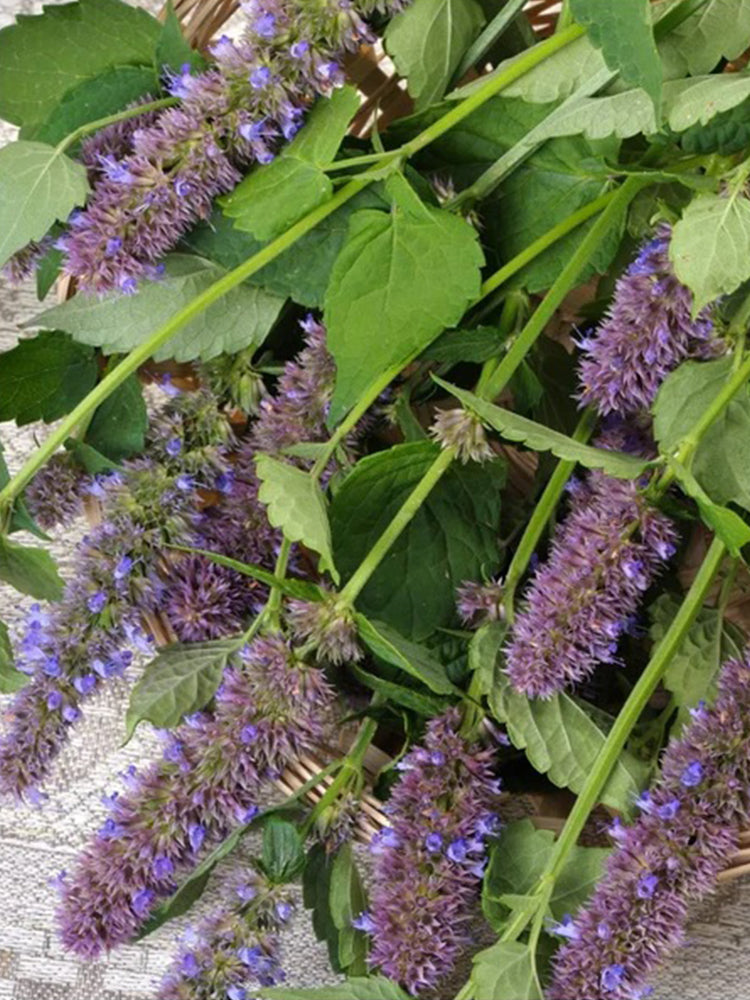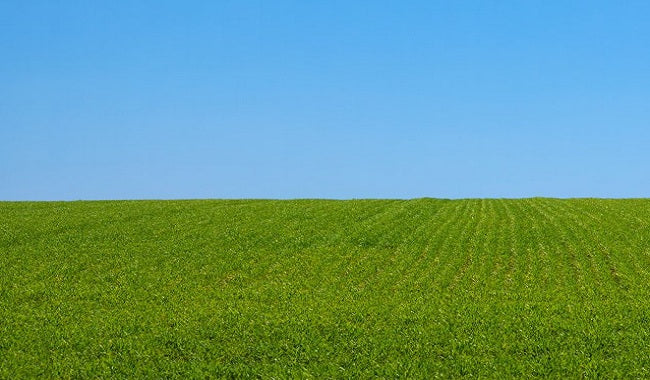BELLFARM
Agastache rugosa, Pale Purple-blue
Sale
Sold out
Regular price
$2.99 USD
Regular price
$4.99 USD
Sale price
$2.99 USD
Unit price
per
Couldn't load pickup availability
-
5-14 Days delivery.
-
Ship out within 24 hours.
Agastache rugosa, commonly known as Korean mint, is a perennial herb belonging to the Lamiaceae family. This plant typically exhibits an upright growth habit, reaching a height of 0.5 to 1.5 meters. The stems are slender, covered with fine soft hairs in the upper part while remaining smooth and hairless at the base. The leaves of Agastache rugosa are heart-shaped or quadrangular, contributing to the plant's distinctive appearance. During the blooming season, the plant produces delicate flowers with pale purple-blue corollas, adding a soft hue to the garden. As the flowering period concludes, the plant forms fruit in the shape of ovoid-oblong nutlets, which mature and serve as the primary means of propagation.
Agastache rugosa thrives best in regions where the average annual temperature ranges between 19°C and 26°C. The plant's growth is significantly influenced by temperature fluctuations; growth slows down or halts entirely when temperatures exceed 35°C or drop below 16°C. This herbaceous plant favors a moist and rainy environment, making it well-suited to areas with annual rainfall exceeding 1600mm. While the seedlings have a particular affinity for rain and require ample moisture during the growth period, excessive soil moisture can lead to root rot and potentially result in plant death. In areas with limited rainfall, irrigation becomes essential to sustain growth. Seedlings also prefer shaded conditions, necessitating the construction of protective coverings or the use of straw to provide shade. Mature plants, however, can tolerate full sunlight exposure. The root system of Agastache rugosa is notably hardy, allowing the plant to survive harsh winters in northern regions and regenerate the following spring. However, the aerial parts of the plant are not frost-tolerant and tend to shed leaves and wither after the first frost.
Agastache rugosa is relatively undemanding regarding soil types and can adapt to various soil conditions. However, the plant demonstrates optimal growth in deep, fertile, and well-drained sandy loam or loam soils. It is sensitive to waterlogging; hence, planting in low-lying areas prone to water accumulation can lead to root decay and plant death. The seeds of Agastache rugosa have a lifespan of 2 to 4 years, making them viable for sowing even if stored for a year or two. Seed germination requires light and is best achieved at temperatures between 18°C and 22°C. Under these conditions, seeds typically germinate within 7 to 10 days. For successful cultivation, ensuring proper light exposure during the germination phase and maintaining appropriate soil conditions is crucial for the establishment and growth of healthy plants.
◆ Specification:
🌱 Family: Lamiaceae.
🌱 Genus: Agastache.
🌱 Leaf Shape: Heart-shaped or quadrangular.
🌱 Flower Color: Pale purple-blue.
🌱 Fruit Type: Ovoid-oblong nutlet.
🌱 Optimal Growing Temperature: Annual average temperature of 19~26°C.
🌱 Temperature Tolerance: Growth slows or stops above 35°C or below 16°C.
🌱 Soil Preference: Deep, fertile, well-drained sandy loam or loam soils.
🌱 Seed Viability: 2 to 4 years.
🌱 Germination Temperature: 18~22°C.
🌱 Germination Days: 7 to 10 days.
Sowing Methods:
1. Broadcast Sowing:
Mix the seeds with fine sand or plant ash, then evenly spread them across the surface of the bed. Lightly pat the surface with a thin board to ensure the seeds make close contact with the soil. Cover with a thin layer of soil, approximately 1 cm thick.
2. Row Sowing:
Create shallow furrows along the bed at a row spacing of 25-30 cm and a depth of 1-1.5 cm. Water thoroughly before sowing. Mix the seeds with fine sand and evenly distribute them in the furrows. Cover the seeds with 1 cm of soil and press down gently.
3. Seedling Sowing Rate:
Use 2-4g of seeds per square meter for seedling beds. For a field area of 667 square meters, the seed rate is 500-800g. After sowing, cover the bed with a thin film to maintain warmth and moisture.
◆ Transplanting
When seedlings reach a height of 12-15 cm and have 4-6 true leaves, transplant them on a cloudy day. Use a row spacing of 40 cm and a plant spacing of 25 cm. Water with diluted manure during transplanting. Plant 6,000-7,000 seedlings per 667 square meters, and water thoroughly to establish roots after transplanting.
Agastache rugosa thrives best in regions where the average annual temperature ranges between 19°C and 26°C. The plant's growth is significantly influenced by temperature fluctuations; growth slows down or halts entirely when temperatures exceed 35°C or drop below 16°C. This herbaceous plant favors a moist and rainy environment, making it well-suited to areas with annual rainfall exceeding 1600mm. While the seedlings have a particular affinity for rain and require ample moisture during the growth period, excessive soil moisture can lead to root rot and potentially result in plant death. In areas with limited rainfall, irrigation becomes essential to sustain growth. Seedlings also prefer shaded conditions, necessitating the construction of protective coverings or the use of straw to provide shade. Mature plants, however, can tolerate full sunlight exposure. The root system of Agastache rugosa is notably hardy, allowing the plant to survive harsh winters in northern regions and regenerate the following spring. However, the aerial parts of the plant are not frost-tolerant and tend to shed leaves and wither after the first frost.
Agastache rugosa is relatively undemanding regarding soil types and can adapt to various soil conditions. However, the plant demonstrates optimal growth in deep, fertile, and well-drained sandy loam or loam soils. It is sensitive to waterlogging; hence, planting in low-lying areas prone to water accumulation can lead to root decay and plant death. The seeds of Agastache rugosa have a lifespan of 2 to 4 years, making them viable for sowing even if stored for a year or two. Seed germination requires light and is best achieved at temperatures between 18°C and 22°C. Under these conditions, seeds typically germinate within 7 to 10 days. For successful cultivation, ensuring proper light exposure during the germination phase and maintaining appropriate soil conditions is crucial for the establishment and growth of healthy plants.
◆ Specification:
🌱 Family: Lamiaceae.
🌱 Genus: Agastache.
🌱 Leaf Shape: Heart-shaped or quadrangular.
🌱 Flower Color: Pale purple-blue.
🌱 Fruit Type: Ovoid-oblong nutlet.
🌱 Optimal Growing Temperature: Annual average temperature of 19~26°C.
🌱 Temperature Tolerance: Growth slows or stops above 35°C or below 16°C.
🌱 Soil Preference: Deep, fertile, well-drained sandy loam or loam soils.
🌱 Seed Viability: 2 to 4 years.
🌱 Germination Temperature: 18~22°C.
🌱 Germination Days: 7 to 10 days.
Sowing Methods:
1. Broadcast Sowing:
Mix the seeds with fine sand or plant ash, then evenly spread them across the surface of the bed. Lightly pat the surface with a thin board to ensure the seeds make close contact with the soil. Cover with a thin layer of soil, approximately 1 cm thick.
2. Row Sowing:
Create shallow furrows along the bed at a row spacing of 25-30 cm and a depth of 1-1.5 cm. Water thoroughly before sowing. Mix the seeds with fine sand and evenly distribute them in the furrows. Cover the seeds with 1 cm of soil and press down gently.
3. Seedling Sowing Rate:
Use 2-4g of seeds per square meter for seedling beds. For a field area of 667 square meters, the seed rate is 500-800g. After sowing, cover the bed with a thin film to maintain warmth and moisture.
◆ Transplanting
When seedlings reach a height of 12-15 cm and have 4-6 true leaves, transplant them on a cloudy day. Use a row spacing of 40 cm and a plant spacing of 25 cm. Water with diluted manure during transplanting. Plant 6,000-7,000 seedlings per 667 square meters, and water thoroughly to establish roots after transplanting.














